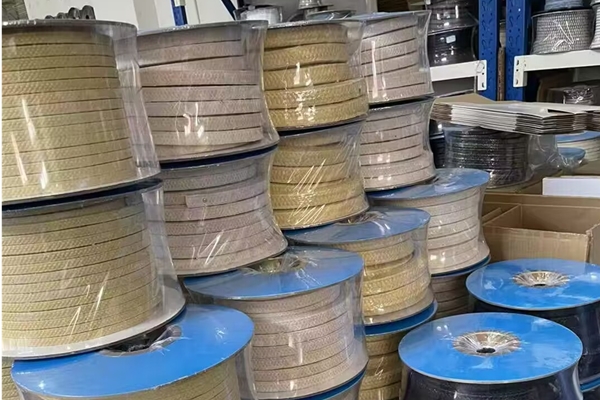If you have been doing research, you may notice that one of them is rarely mentioned. So are they synonymous? Or are they different types of the same thing? What is not used for PTFE? What are PTFE and Teflon?
In the manufacturing and industrial fields, if you don’t understand what PTFE is, you can’t go too far. To do this, you should start with a better understanding of its relationship with Teflon. Keep reading to learn more!
1. Teflon VS PTFE
Teflon is a household name. Everyone knows that it covers your cookware and prevents food from sticking to it while you are cooking. This is obvious.
But what exactly is PTFE? How is it different from Teflon? If you have heard of polytetrafluoroethylene, then you now know that these two substances are at least similar.

What are PTFE and Teflon? Are they different? What makes them different? How do they differ?
2. What is polytetrafluoroethylene?
Polytetrafluoroethylene is a synthetic polymer compound. It is a solid composed of carbon and fluorine. Free radicals polymerize with tetrafluoroethylene to produce a magical substance, polytetrafluoroethylene.
Polytetrafluoroethylene has a high melting point and is difficult to produce. Even when melting occurs, the consistency of the polymer is closer to gel than water.
The appearance of PTFE is usually white and very slippery. This is what it looked like when DuPont chemist Roy J. Plunkett accidentally discovered it in 1938.
3. What is PTFE?
Teflon is the brand name of PTFE. Dynamic Chemical Company registered this term in 1945. Power Chemical Company is a joint venture between DuPont and General Motors. Today, Chemours, a subsidiary of DuPont in 2015, owns the trademark.

4. Why is PTFE called Teflon?
Why is white glue often called Elmer glue whether it comes from a well-known company? Why is a scotch tape called scotch tape, even if it is a Bostik product?
This is a brand!
People don’t know what it is, but they must know that Teflon saved their lives this morning. Just as they knew Elmer helped their kids draw Scotch Whiskey and hang the picture on the refrigerator.
Companies know that the key to making a product a household name is to make it a household name. No one would walk into the store and buy a Teflon-board curling iron. However, they will ask for one that is Teflon gold-plated.
As a company, DuPont is very clever to realize this. So in 1945, they came up with a fluent name for their new discovery. Of course, there are other brands of PTFE: Daikin-Polyflon, Fluon and Dyneon, and so on. Have you heard of these brands?
5. What are the properties of PTFE?
PTFE has many unique characteristics that make it both versatile and useful.
Coefficient of friction
The coefficient of friction is a measure of how much friction a substance produces with polished steel. The coefficient of friction of PTFE is the third-lowest among human known substances!
This means that PTFE is very slippery, causing very little friction.
High melting point
At room temperature, PTFE is solid white. This is how Planker first saw this substance when he first discovered it. In terms of heating, Teflon has a melting point of 600K, which is the equivalent of 327 degrees Celsius. It also works well at lower temperatures (5 K). This is equivalent to -268 degrees Celsius or -450 degrees Fahrenheit.
Water resistant
Take a non-stick pan coated with Teflon and put a few drops of water in it. Pay attention to the way the water drops upward. Now do the same thing in a regular pan and watch it spread out.
Can you see the difference? There are water droplets on the surface of the PTFE coating material because it has natural water resistance.
No reactance
Unlike many materials, Teflon does not react at all to most corrosive substances. This makes it very suitable for use in pipes, valves and seals, carrying corrosive gases and liquids.
Even the Manhattan Project used Teflon to cover the internal structure of the nuclear bomb to prevent uranium leakage.
6. What is PTFE used for?
Perhaps a better question would be, “How is PTFE not used?” But we will stick to the original one for now. So, what is PTFE used for?
As Teflon has a low friction rate, it makes a perfect lubricant for heavy machinery and ball bearings. It can even reduce damage to gun barrels when firing brass bullets.
However, its tendency to break down and the chip has its drawbacks. Teflon PTFE is also used in pipes and in clothes. Think about lawn furniture. It is often made watertight through applications of Teflon.
The neatest applications for PTFE are in the medical field. Since it is non-reactive and waterproof, catheters get coated in PTFE.
PTFE finds its best application in the medical field. Catheters are coated in PTFE because it is non-reactive and waterproof. This blocks bacteria and prevents infection.
In certain surgical procedures, it can also be used as a graft material. There aren’t many polymers that can compare to PTFE.
7/ Teflon is PTFE
In the end, neither PTFE nor Teflon are different from each other. So today we learned we don’t have to get licenses to sell Chemours Teflon products.




